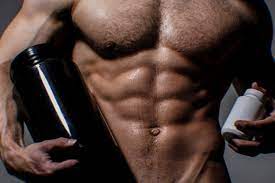Breastfeeding is a beautiful and intimate experience, yet it can present challenges for new mothers. One common issue many face is nipple discomfort or pain. This is where nipple protectors come into play, offering a valuable solution to enhance comfort during breastfeeding. In this guide, we’ll explore the benefits, considerations, and best practices for using nipple protectors, catering to the needs of new mothers.
Understanding the Benefits of Nipple Protectors
nipple protector for breastfeeding are designed to shield sensitive skin on the breast while allowing the natural process of breastfeeding to continue. Made from soft silicone, these protectors not only provide relief but also help prevent further irritation. Many mothers find that using nipple protectors can be a game-changer, enabling them to continue breastfeeding comfortably and confidently.
One significant benefit of nipple protectors is their ability to protect cracked or sore nipples, a common issue for breastfeeding mothers. The protector creates a barrier that reduces friction between the nipple and the baby’s mouth, allowing the skin to heal while maintaining milk flow. This is particularly important for mothers determined to provide the best nutrition for their infants despite experiencing discomfort.
Another advantage is that nipple protectors can assist babies who struggle with latching. Some babies have difficulty attaching properly to the breast, which can lead to frustration for both mother and child. Nipple protectors can help create a more prominent and firmer latch point, making it easier for babies to feed effectively.
Choosing the Right Nipple Protector
Selecting the right nipple protector is essential for ensuring comfort and functionality. When choosing a protector, consider the size and shape that best fits your nipple and breast. It’s crucial that the protector fits snugly without causing additional pressure or discomfort.
Material is also an important consideration. Most nipple protectors are made from medical-grade silicone, which is flexible, durable, and easy to clean. This material is safe for both mother and baby, ensuring that breastfeeding remains a healthy and pleasant experience.
It’s also wise to consult a lactation consultant or healthcare provider when selecting a nipple protector. Their expertise can guide you in finding the appropriate type and size, ensuring that you and your baby have a smooth breastfeeding experience.
Best Practices for Using Nipple Protectors
To get the most out of your nipple protector, proper usage is key. Start by ensuring both your hands and the protector are clean before usage. Position the protector over the nipple, ensuring it fits securely and comfortably. Gently encourage your baby to latch onto the breast, ensuring that the protector remains in place.
Remember that consistency is vital. Using the nipple protector regularly can help alleviate discomfort over time, gradually allowing healing and reducing the need for the protector as your skin adjusts.
Monitor your baby’s feeding cues and behavior while using the protector. Ensure they are feeding effectively and gaining weight accordingly. If you notice any issues or concerns, promptly consult a healthcare professional for guidance.
In Conclusion
Nipple protectors serve as an invaluable tool for mothers navigating the often challenging terrain of breastfeeding. By providing protection and support, they empower mothers to continue nourishing their babies with confidence and comfort. Every breastfeeding experience is unique, and having the right tools can make all the difference.
For mothers seeking additional support and resources, consulting with lactation experts or joining breastfeeding groups can provide further insights and encouragement. Remember, you’re not alone on this breastfeeding journey, and with the right support, you can overcome challenges and create a nurturing bond with your baby.


